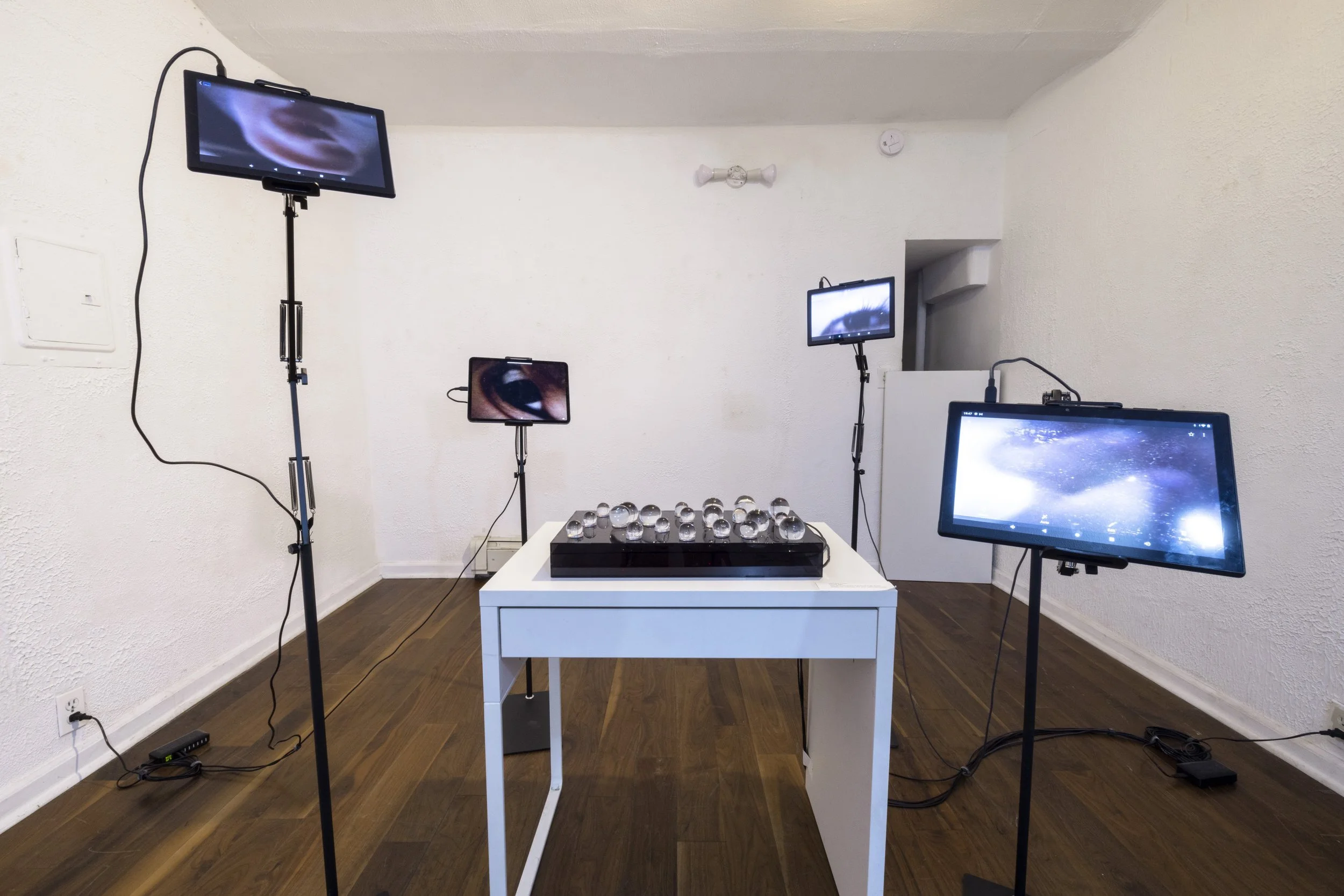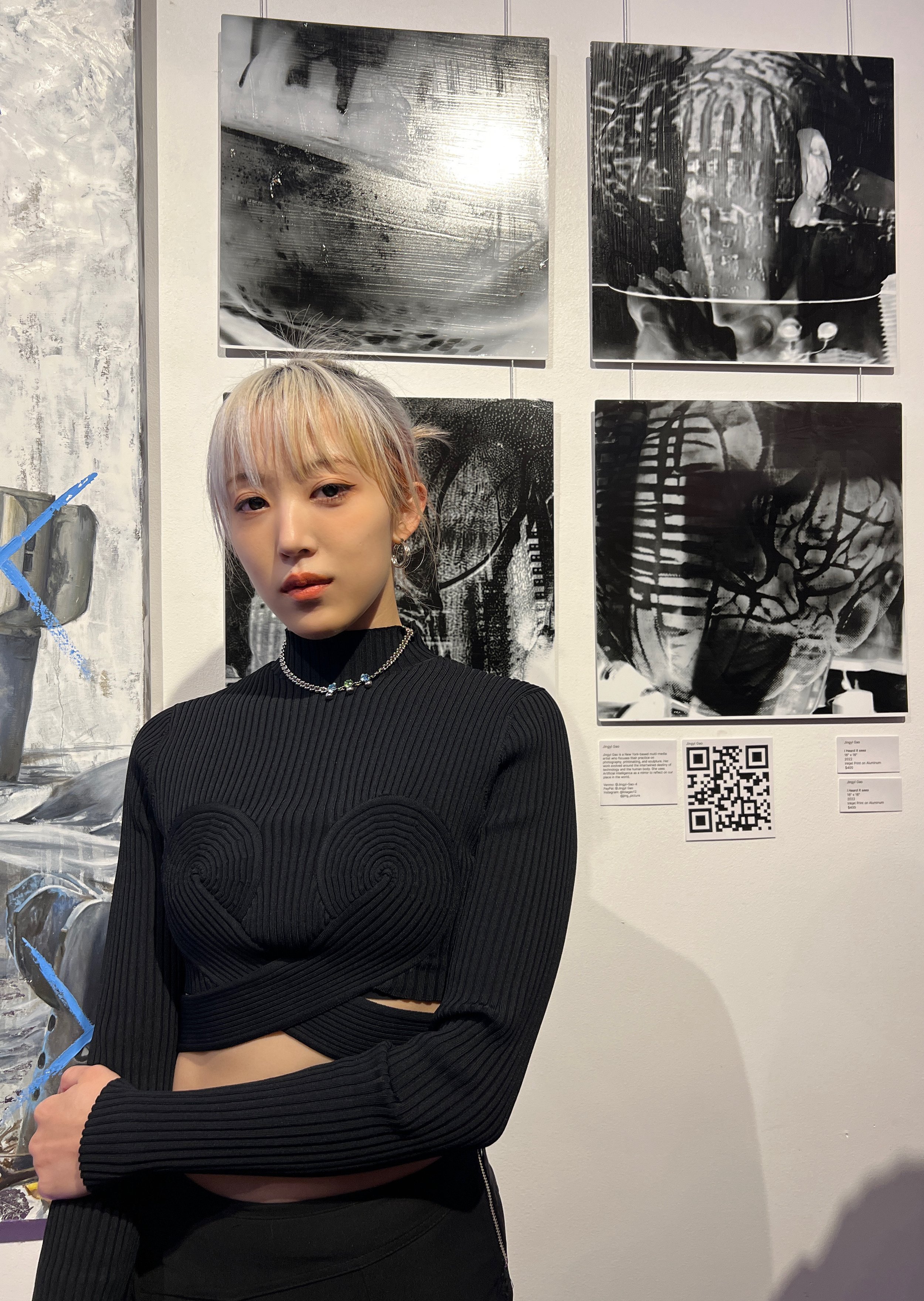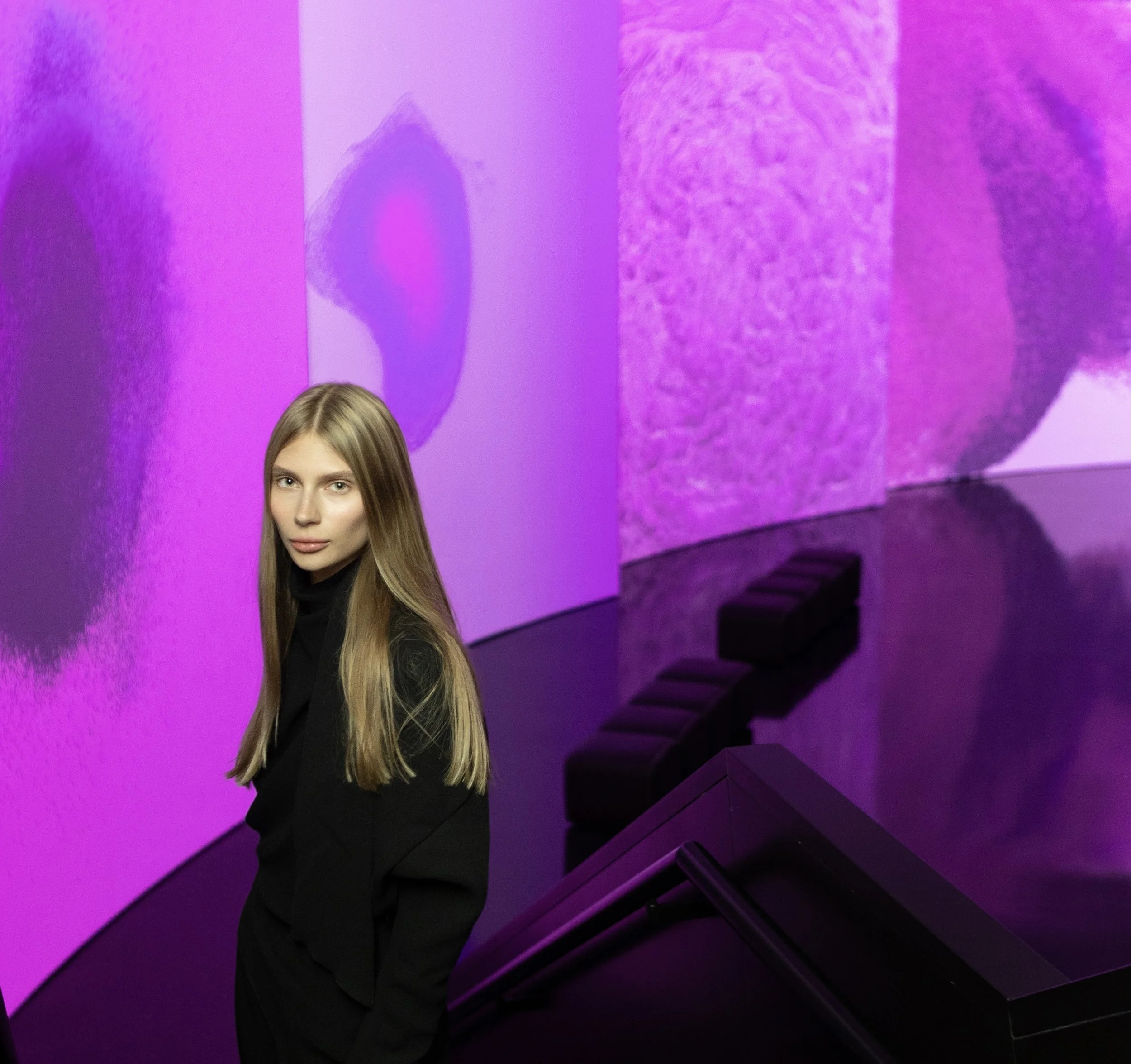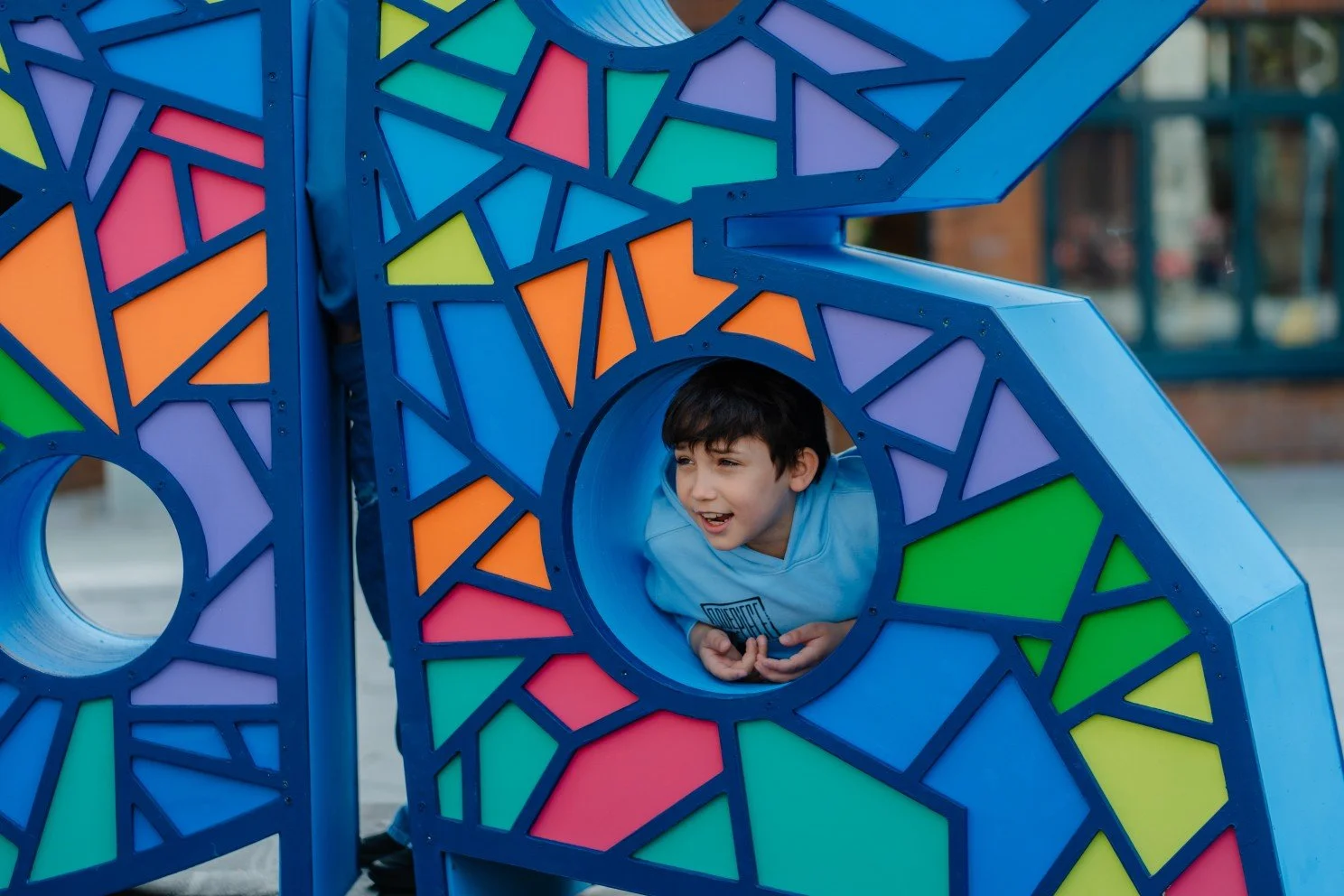10 Questions with Jingyi Gao
Jingyi Gao, a multimedia artist based in New York, specializes in photography, video, and sculpture. She earned her MFA degree in Photo, Video, and Related Media from the School of Visual Arts in New York. Her artistic focus centers on exploring the intricate interplay between technology and the human body. She skillfully employs Artificial Intelligence as a reflective tool to contemplate humanity's position in the contemporary world.
In August 2023, Gao unveiled her inaugural solo exhibition, titled "<It is Us>," at the iidrr Gallery in New York City. Her work has graced galleries and venues worldwide, including the Jinny Street Gallery in Tokyo, SVA Gallery, and The Holy Art Gallery in London.
Gao's artistry has earned recognition in various publications, such as The Purposeful Mayo Issue 2.4 and Loner Magazine. Additionally, her unwavering commitment to her craft led to her receiving the prestigious Alumni Society Award.
Bo Zhang - Portrait
ARTIST STATEMENT
Jingyi Gao, a New York-based multi-media artist, delves into the intricate relationship between technology and the human body through her works in photography, video, and sculpture. Formerly a dancer, Jingyi's journey began with capturing the fleeting beauty of bodily movement on stage. This fascination evolved into an exploration of the intersection between reality and virtuality, tangible and abstract. In her interdisciplinary practice, she aims to evoke contemplation on the complexity of the human form, inviting viewers to engage with its diverse perceptions.
Jingyi's art serves as a mirror, reflecting the symbiotic bond between technology and humanity. She employs cutting-edge techniques alongside traditional media to unveil the interplay between the structural and the manifested aspects of the body. Through fantastical and thought-provoking visual representations, she sparks fresh perspectives on how we perceive and experience the human form. Ultimately, her work seeks to cultivate a richer understanding and deeper appreciation of the human body, urging us to embrace novel ways of seeing and interpreting ourselves.
It is us, installation view at iidrr gallery, 2023 © Jingyi Gao
INTERVIEW
First of all, tell us a little bit about your background. How did you develop into the artist you are today?
I'm an artist based in New York City, primarily focused on exploring the relationship between technology and the human body. Originally from Harbin, China, I grew up in the intellectual atmosphere of Harbin Institute of Technology. At 11, I joined the Ballet program at the Shanghai Dance Academy, studying various dance styles, from Western to Eastern. During my college years, I navigated cultural and interdisciplinary challenges at Nanyang Academy of Fine Arts in Singapore and SUNY Purchase College in New York, which left a huge impact on my artistic journey.
My interest in photography began backstage in the theater, capturing the beauty of body movements during rehearsals. Since then, my artistic practice has been driven by the interplay between the organic body and its representation, inspiring the exploration of boundaries between reality and virtuality, form, and abstraction. In recent years, influenced by technological advancements, my works have become more experimental and interdisciplinary.
I use cutting-edge techniques alongside traditional media to unveil the interplay between the structural and manifested aspects of the body. Through imaginative and thought-provoking representations, I aim to provoke perspectives on how we perceive and experience the human form.
You started as a dancer before turning to photography and visual art. How did this discipline help you and influence your practice as an artist?
For the longest time, being a dancer defined a significant part of who I am. In my dance days, I started by capturing the beauty of bodily movement on stage. I became captivated by the idea of exploring both myself and the world through the lens. Through this exploration, I uncovered that a photograph captures much more than a frozen moment. A spontaneous gesture captured by my lens, influenced by elements such as light, shadow, and time, can yield unexpected visual effects and emotional associations, offering countless possibilities for interpretation. The imagery within a framed photograph can persistently extend beyond its borders, delivering to viewers information, emotions, and meanings that go beyond its physical dimensions and pixel values. The discovery influenced me to look beyond a single object to imagine and explore all its possibilities.
It is us, installation view at iidrr gallery, 2023 © Jingyi Gao
It is us © Jingyi Gao
It is us © Jingyi Gao
How would you define yourself as an artist nowadays? And how did your art evolve over the years?
My work is influenced by my sensitivity to emotions. I began my creative journey by looking inward, finding inspiration in my past emotional experiences and bodily sensations. Through this exploration, I discovered the duality of being both the subject and object of my art. Over time, I expanded my perspective, allowing my inner world to blend with the broader external environment. This shift enabled me to observe my own experiences from an outsider's standpoint while seeking resonance with the world around me.
My creative evolution has now reached a stage where I explore the interplay and connection between the human body and the technology or machinery it engages with in my artistic expression.
You are a multidisciplinary artist, working primarily with photography, installation, and digital mediums. How do you choose which medium works better for a certain project?
A major part of my creative process involves turning digital images into physical objects, like sculptures and interactive installations. Through this artistic practice, my goal is to bring to life the idea of the human body as a machine and explore its connection with technology.
For instance, in my artwork titled "Its Skin," I delve into the relationship between the organic body, technology, and the idea of digital skin. To craft the sculptures, I use a laser cutter typically employed for engraving. It precisely carves the image of a scar onto a piece of colored plexiglass. These sculptures display the digital imprint on a physical form, giving the plexiglass surface texture and resembling a scar. In this context, scars and glitches can be seen as deviations from the norm, possibly unwanted but unavoidable aspects.
The portraits in my piece "Its Face" were taken using a pinhole camera. Essentially, light passes through the pinhole and projects onto the back of the camera, mimicking how our eyes receive light and transmit visual data to the brain. To create these images, a lens filter made from an A.I.-generated eye image was placed inside the camera enclosure, essentially forming a "metaphorical camera" infused with artificial intelligence. The light that goes through the pinhole and lens filter then exposes the film, resulting in images that depict the perspective of an artificial eye.
It is us, installation view at iidrr gallery, 2023 © Jingyi Gao
Its skin © Jingyi Gao
Its skin © Jingyi Gao
Your work strongly focuses on the human body and its relationship with machines and technology, as in your series "It is us." What messages would you like to convey to the viewers?
In "It Is US" (2023), I explore the relationships between humans and non-humans, as well as the interplay between organic and inorganic elements. My focus extends to the binary relationship between humans and machines, progressing from AI-generated images to sculptures and eventually to video installations. This project reimagines different parts of the human body from the perspective of AI, delving into the possibilities and limitations of human-machine interactions.
I draw inspiration from visual artist Robert Pepperell, the author of The Posthuman Condition, who stated, "If we can think of machines, then machines can think; if we can think of machines that think, then machines can think of us." I want to explore the idea that 'machines can think of us.' If the machine may eventually possess the ability to think, what would it think about its creator, the human? What similarities exist between humans and machines? What do we perceive differently when the gaze turns towards us? How can we reconsider the binary relationship between humans and machines?
What do you think is the role of art in addressing fundamental themes, such as identity or the influence of technology over our lives?
The teacher who taught my contact improvisation class once conveyed something along the lines of: "It's hard to truly perceive the world and yourself until it touches you." Our bodies are intricately designed machines, and in most cases, we are unaware of their operation – every breath, every blink of the eye, the growth of hair and nails, the circulation of blood. It's only when something touches us that we feel the presence of our skin. It's only when we inhale an unfamiliar scent that we realize how interconnected our nasal passages and taste buds are, and so on. So, our contact with the external world allows us to sense the workings of our own bodies.
The development of various technologies, while making life more convenient, also impacts our bodies. For instance, during the COVID-19 period, there were times when I spent long hours sitting in front of the computer, playing games to pass the time. It was the first time I experienced soreness in my left shoulder blade and stiffness in my right elbow. Sometimes, my ring and pinky fingers even went numb, something I never felt during my regular dance routines. It's as if my body had been conditioned by the keyboard and mouse. While these machines assist us in various tasks, they also limit the natural range of motion of certain body parts, leading to changes in our muscle movements and, over time, potentially affecting our bone alignment.
Through these observations, my curiosity grew regarding how the technologies and machines developed to meet our needs inadvertently transform and influence us, leading to a symbiotic fusion. I began to contemplate the ways in which I could artistically convey these insights and experiences.
It is us © Jingyi Gao
It is us © Jingyi Gao
It is us © Jingyi Gao
It is us © Jingyi Gao
Where do you find inspiration for your work, and what is your creative process like?
I find inspiration through ideas from books or articles I read. Then, I try to create it using the imaging techniques I know. I seek more inspiration through peer discussion and problem-solving processes along the way until I find the moment to make it work.
Is there anything else you would like to experiment with? Any medium or theme you would like to incorporate into your work?
I am planning to explore bio art and shoot images with a microscope. Also, I want to explore more alternative photography methods and 3d printing.
Are you working on any new project right now? Any exciting project or collaboration you would like to share with our readers?
I want to explore the concept of a heart in both organic bodies and machines more deeply. In humans, the heart functions as a life-supporting device, tirelessly pumping blood throughout the body for proper function. I plan to bring this concept to life using 3D printed ceramic resin. The idea is to have the machine create the heart it envisions. The heart, being the center of the body's heat, will be materialized using ceramic resin for 3D printing, which functions similarly to traditional clay, requiring heat to become a permanent object.
Finally, what are your plans for the future? What do you think (and wish) the future holds for us?
I believe we'll witness a much deeper integration of technology and humans in art. The next phase won't just blur the lines between the physical and virtual worlds; it'll also bring visual concepts to life. Simultaneously, the discussion around the ethical implications of technology in conjunction with organic beings will become more prominent, leading to a philosophical revolution. This will impact our fundamental understanding of the world, including how we perceive reality, virtuality, time, and space, and even alter our "proprioception." Moreover, it poses a potential threat to the ontological dimension of human society and all human civilization. It necessitates a reevaluation of our understanding of a system, marking what should be the most crucial theoretical contribution of "bodily posthumanism."
Artist’s Talk
Al-Tiba9 Interviews is a promotional platform for artists to articulate their vision and engage them with our diverse readership through a published art dialogue. The artists are interviewed by Mohamed Benhadj, the founder & curator of Al-Tiba9, to highlight their artistic careers and introduce them to the international contemporary art scene across our vast network of museums, galleries, art professionals, art dealers, collectors, and art lovers across the globe.



























